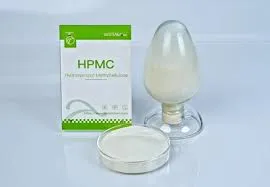
nov . 18, 2024 20:11 Back to list
Hydroxypropyl Methyl Cellulose Production Insights from Leading Manufacturers
Hydroxypropyl Methyl Cellulose An Essential Ingredient from Reliable Manufacturers
Hydroxypropyl Methyl Cellulose (HPMC) is a versatile, water-soluble polymer that has emerged as a critical component across various industries, including pharmaceuticals, food, construction, and cosmetics. As a synthetic polymer derived from cellulose, HPMC offers unique properties that make it well-suited for a range of applications. With increasing demand for this multifunctional ingredient, the role of manufacturers in providing high-quality HPMC has become paramount.
Manufacturers of HPMC undertake a complex process to ensure that the product meets strict quality standards. The synthesis of HPMC involves the hydroxypropylation and methylation of cellulose, which is typically derived from plant fibers. The resulting compound boasts excellent water retention, film-forming capabilities, and a stable viscosity profile that can be tailored to specific needs. Such properties make it a valuable additive in various formulations.
In the pharmaceutical industry, HPMC is widely used as an excipient in tablet formulations and controlled-release drug delivery systems. Its hydrophilic nature allows for the modification of drug release rates, enhancing the efficacy of medications. The ability to create a gel-like consistency upon contact with water further adds to its utility in creating sustained-release formulations. Therefore, reputable HPMC manufacturers prioritize the purity and consistency of their products to ensure optimal therapeutic outcomes.
In the food industry, HPMC acts as a thickening agent, emulsifier, and stabilizer, contributing to the texture and mouthfeel of various food products. As a fat replacer, it helps reduce calorie content while maintaining product quality. The growing demand for clean-label products has spurred manufacturers to focus on producing HPMC that meets safety and regulatory standards, allowing food scientists to innovate while ensuring consumer safety.
hydroxypropyl methyl cellulose manufacturer

Construction is another sector that benefits from HPMC. It’s commonly used in cement, tile adhesives, and plaster as a thickening agent and workability enhancer. The incorporation of HPMC enhances water retention, which is crucial for improving the adhesion and performance of construction materials. Manufacturers play a crucial role in producing HPMC with tailored properties for specific construction applications, enabling engineers and builders to achieve high performance in their projects.
In the cosmetics industry, HPMC serves as a thickener and stabilizer, enhancing the texture of products like lotions and creams. Its non-toxic and biodegradable nature aligns with the growing demand for sustainable and safe cosmetic formulations. Manufacturers are increasingly focusing on producing HPMC that meets both functional and ecological standards.
As industries continue to evolve, the demand for high-quality hydroxypropyl methyl cellulose is expected to rise. Manufacturers must stay at the forefront of technology and innovation to maintain product integrity and meet changing consumer needs. Investing in quality control and adhering to regulatory frameworks will ensure that HPMC remains a trusted ingredient in a multitude of applications.
In conclusion, the role of HPMC manufacturers is essential in providing the high-quality products that various industries rely on. Through commitment to quality and innovation, these manufacturers contribute significantly to the effectiveness, safety, and sustainability of diverse formulations.
-
Versatile Hpmc Uses in Different Industries
NewsJun.19,2025
-
Redispersible Powder's Role in Enhancing Durability of Construction Products
NewsJun.19,2025
-
Hydroxyethyl Cellulose Applications Driving Green Industrial Processes
NewsJun.19,2025
-
Exploring Different Redispersible Polymer Powder
NewsJun.19,2025
-
Choosing the Right Mortar Bonding Agent
NewsJun.19,2025
-
Applications and Significance of China Hpmc in Modern Industries
NewsJun.19,2025







